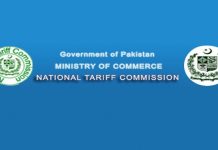Non-solar power consumers in Pakistan bore an additional cost of Rs200 billion in fiscal year 2023-24 due to the rapid but under-regulated expansion of solar energy systems, according to a report titled “The Distributed Divide – How Solar Expansion Affects Non-Adopting Consumers and Utility Economics,” released by Arzachel.
The report reveals that the surge in solar adoption, particularly through behind-the-meter systems and net metering, has increased tariffs by approximately Rs2 per kilowatt-hour (kWh) for grid-reliant users, highlighting inequities in cost distribution.
Without regulatory intervention, this burden is expected to grow further, with non-solar consumers projected to face an additional Rs131 billion in costs if grid demand falls by 5% in the current fiscal year, or Rs261 billion for a 10% reduction.
The study emphasizes the need for immediate reforms, recommending a shift from net metering to net billing or feed-in tariff (FiT) systems to lower rates and balance system marginal costs. It also proposes the introduction of fixed grid access fees to reflect service costs, revisions to the distribution code for managing bi-directional power flows, and the establishment of an ancillary services market to stabilize the grid.
The report estimates that a typical 10kW net metering system allows solar adopters to avoid grid costs of Rs20 per unit, while behind-the-meter systems bypass an average of Rs7 per unit in fixed costs. While solar adopters save significantly, this shift has caused energy sales to plummet by 8-10% during daylight hours, pushing fixed grid maintenance costs onto non-solar consumers.
Technical challenges for distribution companies (DISCOs) include voltage instability, reverse power flows, and increased demand for services like frequency regulation and reactive power support. These issues necessitate substantial infrastructure investment, further straining the sector financially.
The report also warns of the looming “duck curve” phenomenon, where midday solar power generation reduces grid demand sharply, followed by steep evening surges, complicating grid management. Without intervention, the energy sector risks entering a “death spiral,” marked by rising tariffs, declining grid revenues, and further consumer migration to solar solutions.
The study underscores the urgency of regulatory and policy reforms to address these challenges, ensuring equitable cost allocation, grid sustainability, and long-term energy sector viability.
























